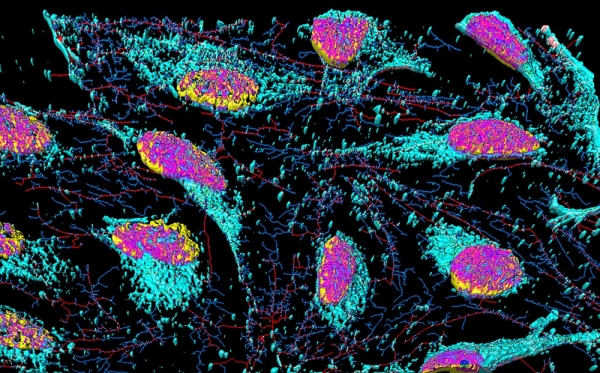I’ve received a lot of emails from folks asking why NIH announced and then subsequently postponed the “NIH Workshop on Optimizing Reproducibility in Nonhuman Primate Research Studies by Enhancing Rigor and Transparency.” With everything going on in this space, NIH decided to pump the brakes on our NHP workshop to make sure we were putting together an agenda that moves the conversation forward and takes advantage of the expertise and groundwork already laid.
Over the past few years, NIH has been bolstering activities and policies focused on enhancing the rigor and reproducibility of the science it funds. A notable example of this would be the work we have been doing to improve the quality and transparency of clinical trials. As discussed at the June meeting of the Advisory Committee to the NIH Director (ACD), the agency is now turning its attention to identifying gaps and opportunities to improve the rigor, reproducibility, translational validity, and transparency of studies involving animal models.
At that same meeting, NIH Director Francis Collins made it clear that nonhuman primate (NHP) research is essential to the NIH portfolio given the fundamental role it plays in both basic and translational research. In fact, the NIH Office of Research Infrastructure Programs (ORIP) recently released a two-part report on assessing nonhuman primate needs and resources for biomedical research, which projected an increased and unique need for NHP models, particularly in the areas of neuroscience and infectious disease.
While the NIH effort is focused rightfully on all species used in biomedical research, NHP research presents some unique opportunities and challenges. This has long been recognized in the animal welfare arena (for example, the Office of Laboratory Animal Welfare has six species-specific publications on enrichment for NHP) and has been well documented in considerations of scientific justification and oversight. Moreover, the very qualities that make NHPs the best – and sometimes only – models for the study of human disease and translation of medical advancements also make them the subject of great public interest of which we, as a publicly funded research agency, are cognizant.
To help think through these unique issues, we will be convening a workshop of experts in the field of NHP models to discuss best practices for how these variables are assessed and taken into consideration. This includes thinking through how welfare considerations (such as housing enrichment, long-term care needs, social engagement, etc.) might clarify – or confound – research findings, as well as discussing whether the intersection of cutting-edge science, like neuroscience or gene editing, might present unique ethical considerations for NHP research.
An important thing to keep in mind is that NIH is not alone in thinking about these issues. The National Academies recently hosted two workshops on the use of NHPs. The first workshop focused on opportunities afforded by new NHPs models while the second focused on the care, use, and welfare of marmosets involved in gene-editing research. This mirrors the discussions arising in the scientific and bioethics communities about the intersection of NHP research, emerging technologies, and ethical issues.[1] [2] [3] Additionally, recognizing the value of NHP data and the need to share data efficiently, researchers are beginning to self-assemble to promote collaboration and open science. For instance, the PRIMatE Data Exchange is hosting a meeting in the fall at the Wellcome Trust to bring leading investigators from around the world to develop action plans related to activities in the field of NHP imaging. At the end of the day, all of these efforts have a common goal: assuring the best quality science adheres to commonsense ethical standards in order to improve human health.
We look forward to engaging with stakeholders to share best practices, consider new challenges, and offer pathways for improvement if needed. Stay tuned for further information…
[1] Sadato et al. (2019) Neuroethical issues of the Brain/MINDS project of Japan. Neuron, 101:385-389. https://doi.org/10.1016/j.neuron.2019.01.006
[2] Greely et al. (2016) Neuroethics in the age of brain projects. Neuron, 92(3): 637-641. https://doi.org/10.1016/j.neuron.2016.10.048
[3] Johnson, L.S. (2019) Neuroethics of the nonhuman. AJOB Neuroscience, 10(3):111-136. https://www.tandfonline.com/doi/full/10.1080/21507740.2019.1632973?af=R&
Posted by Dr. Carrie D. Wolinetz, September 16, 2019









